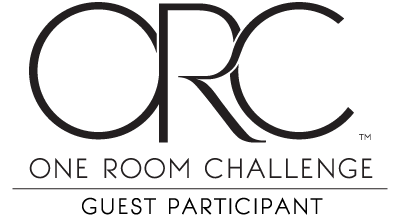Like many people, I got really into gardening during the pandemic. I’ve made mistakes and learned a LOT of lessons over the last two years, the most fundamental of which is the tenet of right plant, right place.
What does that mean, exactly? It’s essential to understand the characteristics of your site including annual temperatures, amount of sun, amount of rain, wind exposure, and soil type. Then, select plants that are well-suited for the conditions of the site.
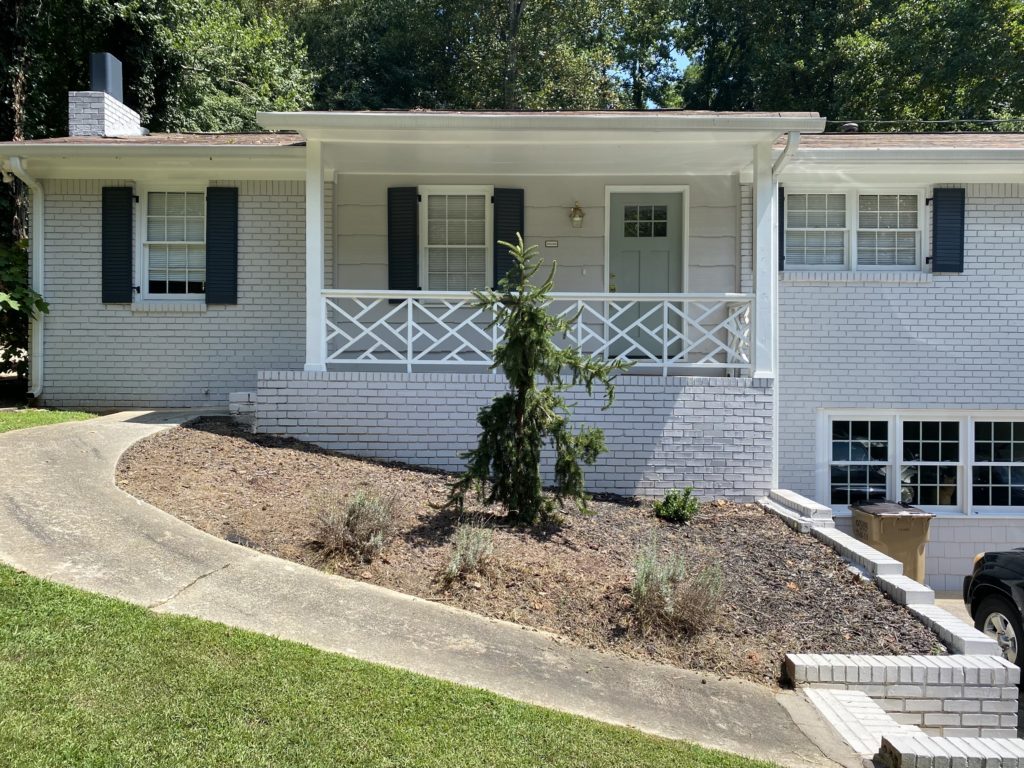
In my case, the site I’m focused on for the One Room Challenge is a garden bed in my front yard. I live in north Georgia, which is USDA Zone 7b (you can find your zone here!). My front yard gets full afternoon sun. The garden bed is located against the house, so the temperature is a bit hotter and the soil is more compacted than in other parts of the yard. All of these factors (plus many more!) combine to create a microclimate that is unique to the garden bed.
Why does this matter, you ask? For example, as much as I love camellias, they just don’t make sense for my site – and I’ve killed three trying to make them work. Camellias grow best in morning sun and dappled shade in the afternoon, which is the opposite of my garden bed. Try as I might, I just can’t force it. And you know what they say – if you can’t beat the conditions of your site, pick plants that are a better fit!
Why is it important to grow native plants?
Enter native plants. According to the National Wildlife Foundation, “a plant is considered native if it has occurred naturally in a particular region, ecosystem, or habitat without human introduction.”
Native plants are uniquely suited to the climate of a region, and they perform well with minimal inputs from humans when planted in a site that aligns with their growing requirements. That means less work and a higher chance of success for the home gardener!
Also, native plants have formed symbiotic relationships with native wildlife over hundreds and hundreds of years. They offer food and shelter to birds, insects, amphibians, mammals, etc. Native plants require less water, improve soil health, and help to manage rainwater runoff.
There are so many benefits to planting native plants. Here are some great resources to learn more about native plants:
- National Wildlife Foundation
- Native Plant Trust
- Georgia Native Plant Society (There are many state-specific chapters throughout the US!)
- Your local county extension office or master gardener program
Where can you source native plants?
Ok, you’re convinced that native plants are super cool! Now, where can you source them? Native plants can be a challenge to find at traditional nurseries or big box stores, so here are five other ways to source native plants:
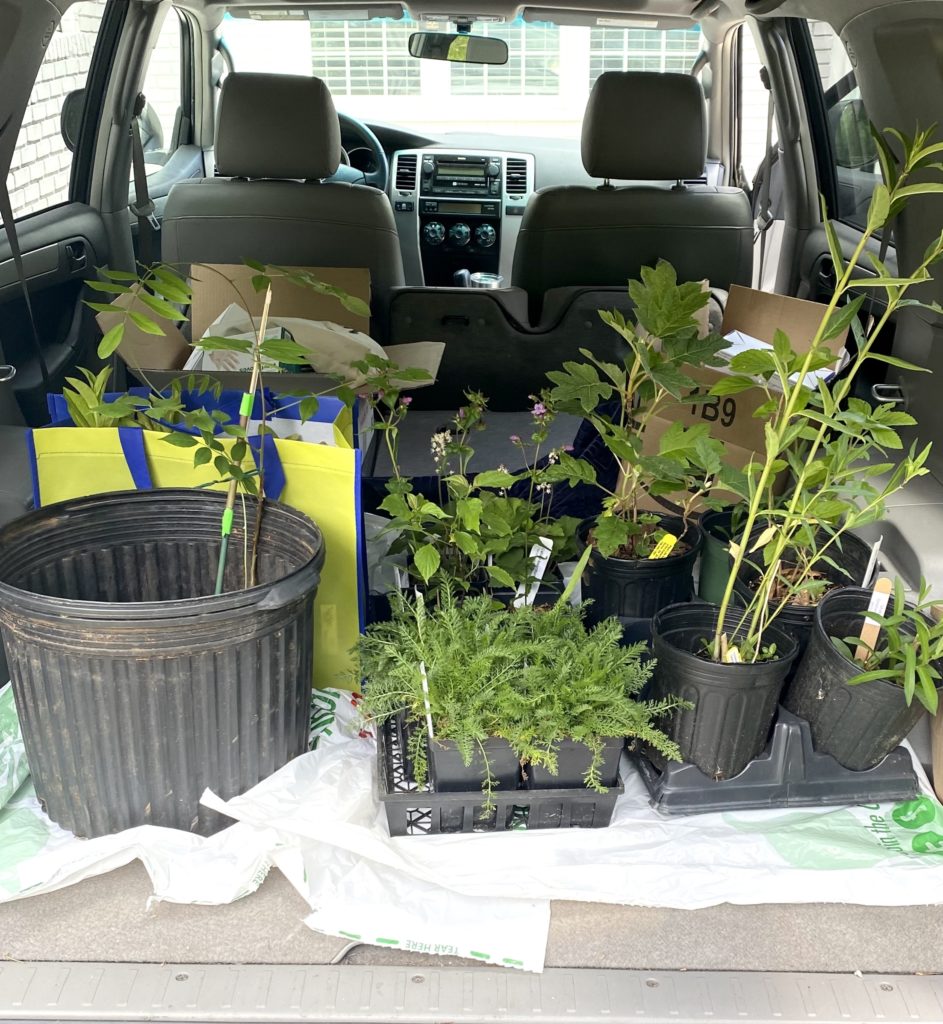
1. Sanctioned Native Plant Rescues
Let’s start with the most fun, affordable, and physically demanding option – join a sanctioned plant rescue! Georgia Native Plant Society organizes plant rescues in the Atlanta area that members can join, and as a participant, you rescue plants in the path of destruction on future development sites.
I recently went on my first rescue, and it was great experience. There are facilitators who guide you through the site and help with plant identification and transplant tips. You’ll definitely put in some sweat equity, but in exchange, you can transplant the native plants that you dig up to either your own home or public facilities and projects of the GNPS.
This option enables you to save plants AND save money, as well as meet fellow native plant enthusiasts while getting your outdoor physical activity in – a real win-win-win-win!
*One quick note about transplanting – please never dig up plants from a property where you do not have explicit permission to do so!*
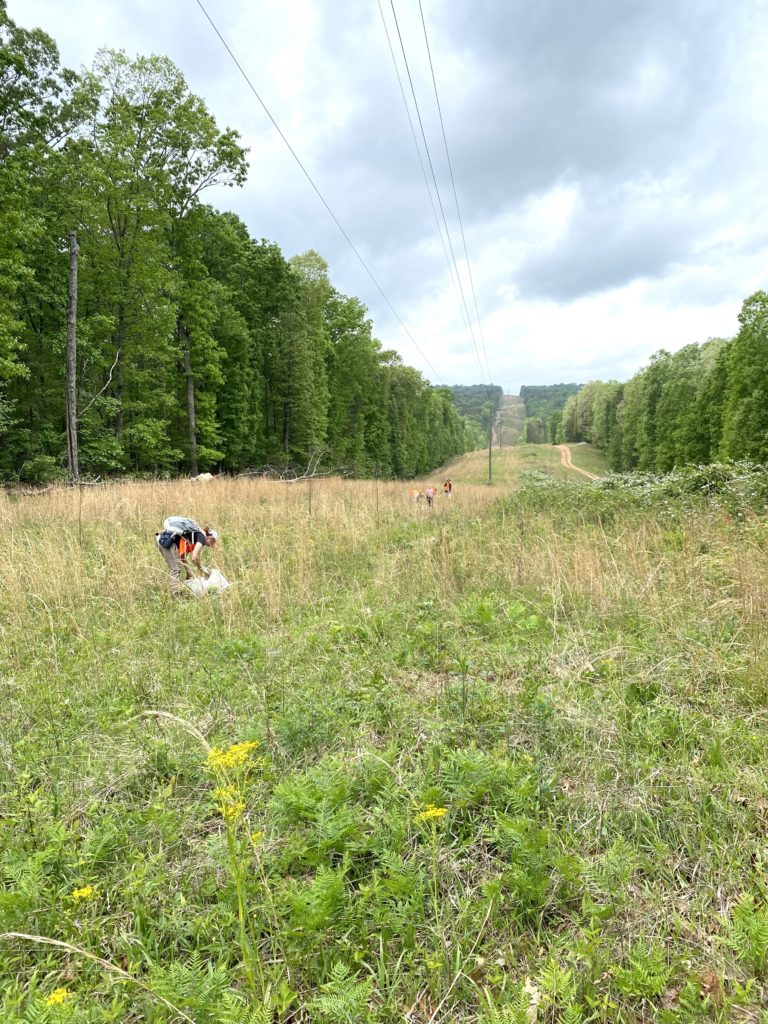
2. Trade Native Plants with Other Gardeners in Your Area
Gardeners are a generous bunch! I’ve joined a few Facebook groups for Georgia gardeners, and there are always people offering cuttings, seeds, or plants for free or a small fee. You can also grow your community of fellow gardeners by participating in educational workshops, garden tours, plant sales, or volunteer opportunities for local organizations like community gardens.
Not only will you learn so much from your gardener friends, but you’ll also have a great network with which to trade and share native plants 🙂
3. Your Own Yard
Propagate new plants from existing plants in your yard. This option is more advanced, but you can save a lot of money by growing new plants from seed or cuttings. There are loads of folks who know way more about plant propagation than I do, so googling how to propagate a specific plant or asking gardener friends for tips will be your best bet here.
4. Local Plant Sales
Local plant sales are a great way to find and buy native plants. If you’re local to the Atlanta area, here are some sales with solid native plant options:
- Georgia Native Plant Society Plant Sale
- Chattahoochee Nature Center Native Plant Sale
- Cobb Master Gardeners Plant Sale
Plant sales typically occur in the spring and fall each year. Volunteers and staff who run the plant sales can offer you great suggestions on which plants would be best for your site, as well as tips on how to successfully establish plants.
These sales can be extremely busy, so I suggest arriving early on the first day of the sale for the best selection. Also, come prepared with a list of plants that you really want and grab those first. Then you can leisurely explore the rest of the sale for fun additions. Some sales offer carts and/or a “plant parking” hold area, but it’s easiest to bring your own foldable cart to carry everything. And just remember that you’ll need to plant everything that you buy, so try not to get too carried away!
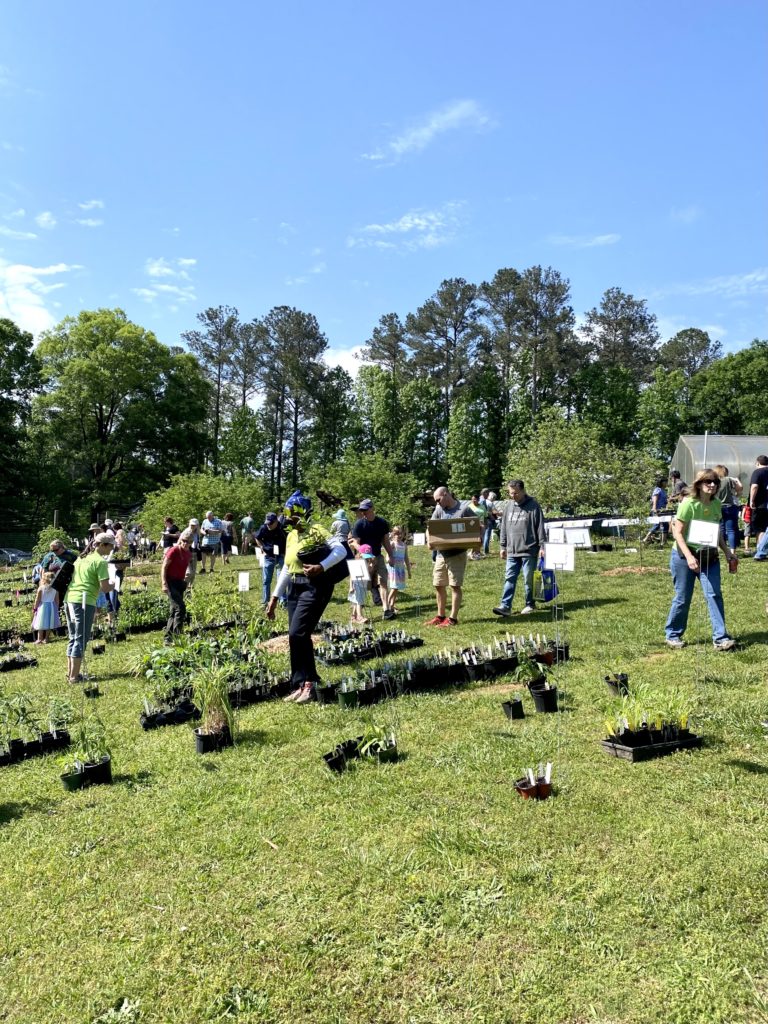
5. Local Native Plant Nurseries
Nurseries focused on native plants have been popping up more and more. The State Botanical Garden of Georgia curates a list of nurseries specializing in native plants. Some of these nurseries are by appointment only, so be sure to confirm before making the drive. Nursery staff are highly knowledgable about native plants and can offer you advice on plant selection and establishment.
Of course, you can also find some native plants at larger nurseries or big box stores, but be sure to check the botanical name, not just the common name. For example, in Georgia, some goldenrods and mints are appropriate for the home garden and great for pollinators, while others are not native to the region and can colonize your entire space and crowd out other species.
Have you had success using native plants? Cool ideas for how to ethically source plants? I’d love to hear about your experiences in the comments!
If you’d like to see more behind the scenes, join me on Instagram. You can also subscribe to the blog to receive email updates on the ORC and beyond.
Want even more design goodness? You can spread some love to the Spring 2022 ORC featured designers and fellow guest designers here.
